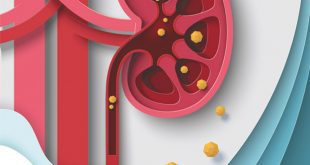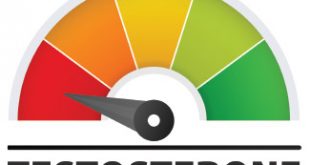What You Should Know About OAB Stimulants, Symptoms and Treatment
Kenneth A. Essig, M.D.
 People with overactive bladder (OAB) often experience urgency at inconvenient and unpredictable times and may have trouble with leaking. Overactive bladder interferes with work, daily routines, intimacy and can reduce an individuals’ self-esteem and quality of life.
People with overactive bladder (OAB) often experience urgency at inconvenient and unpredictable times and may have trouble with leaking. Overactive bladder interferes with work, daily routines, intimacy and can reduce an individuals’ self-esteem and quality of life.
In normal urination and a healthy bladder, the smooth muscles surrounding the bladder contract and relax in response to urine volume. With overactive bladder disorders, the muscle surrounding the bladder contracts too frequently, resulting in the urgent need to urinate.
Overactive bladder is perhaps the most common thing I see in my urology practice. It can affect up to one in three women and one in four men throughout their lifetime, and the symptoms can range from a mild nuisance to a life-altering, debilitating disability.
When a patient presents with what’s described as OAB symptoms, which is typically frequent trips to the bathroom to urinate day and night, my job is to make sure no other issues are causing the symptoms. Some symptoms can become more dangerous, such as infection tumors, or neurological disorders. Men can experience overactive bladder symptoms due to an enlarged prostate. Once I rule out these symptoms, I start with very conservative approaches and then move to more involved treatment only if necessary.
Most patients I see with OAB symptoms do not have dangerous disorders but rather an overactive bladder due to lifestyle habits.
I start by performing a diagnostic ultrasound to measure how the bladder empties. If they haven’t fully emptied their bladder, we check for diabetes or neurological issues, and for men, we check the prostate.
If the patient can effectively empty their bladder but still feel the urgency to urinate frequently, I address their lifestyle habits. It’s a common misconception for people to believe they need to drink excessive amounts of water. People who ascribe to a very liberal intake of fluids are often having excessive urination. The kidneys don’t need extra fluids to work properly. This philosophy of more is better is like eating as much food as possible to flush the colon. It’s not helpful.
Many patients are drinking 5 to 6 bottles of water per day, which is about 10 cups of water, plus other drinks. We get plenty of fluids from our food intake as well, so this thought process can lead to too many fluids. Unless someone is very active and sweating or parched with a dry mouth, etc., the fluid intake should not be more than a few cups of water per day. I ask patients to cut back on fluids and avoid overconsumption of caffeine and alcohol, which are dehydrating and stimulate urination. It’s also critical not to drink anything 2 to 3 hours before bedtime.
Limiting fluids for approximately one month usually clears up the majority of my patient’s issues with OAB. However, if this doesn’t address the problem, there are other options to try.
For example, if a patient is on medications that might contribute to OAB, we ask their primary care physician if the medications can be changed.
If this does not improve the OAB, we can prescribe medications to control frequent urination.
These medications can help relax the bladder to help reduce urgency. If these medications work well, we can usually wean them off after a few months, and the patient’s urination regulates on its own.
A minority of patients will need further treatment. For these individuals, we look inside the bladder and perform a test to check the pressure.
Innovative interventions for severe case:
Newer interventions to treat complex OAB cases include Botox, which is injected into the bladder to relax the bladder. Within a few short weeks, most patients improve. Some people might need to have the procedure repeated.
Another procedure is sacral neuromodulation. A tiny wire (not much larger than human hair) is placed on the glut muscle with a quarter-size impulse device that sends messages to regulate urination. This procedure has approximately 80% effectivity. It only takes approximately 30 minutes, and if the procedure does not work, it can be easily removed.
The final message is that currently there is much that can be done to address an over active bladder. If this is an issue for you please see your urologist.
Kenneth A. Essig, M.D.
Dr. Kenneth Essig is a board-certified urologist. He attended the University of Cincinnati, where he earned his degree in medicine and completed a residency. Dr. Essig puts his experience to use while addressing any critical issues his patients encounter. Dr. Essig is certified by the American Board of Urology and is a part of BayCare Medical Group located in Winter Haven, Florida. He also uses specialized tools and equipment to analyze the condition of the patient. Dr. Essig works tirelessly to ensure his patients get the most advanced treatment possible.
Bay Care Medical Ground
7599 Cypress Gardens Blvd.
Winter Haven, FL 33884
Phone: (863) 845-2688
 Central Florida Health and Wellness Magazine Health and Wellness Articles of the Villages
Central Florida Health and Wellness Magazine Health and Wellness Articles of the Villages



